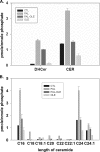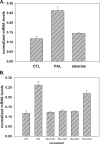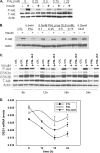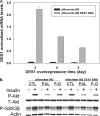Differential regulation of dihydroceramide desaturase by palmitate versus monounsaturated fatty acids: implications for insulin resistance
- PMID: 21454530
- PMCID: PMC3089502
- DOI: 10.1074/jbc.M110.186916
Differential regulation of dihydroceramide desaturase by palmitate versus monounsaturated fatty acids: implications for insulin resistance
Abstract
Much data implicate saturated fatty acids in deleterious processes associated with obesity, diabetes, and the metabolic syndrome. Many of these changes may be due to aberrant generation of bioactive lipids when saturated fatty acid availability to tissues is increased. On the other hand, studies are emerging that implicate the monounsaturated fatty acid oleate in protection from saturated fat mediated toxicity; however, the mechanisms are not well understood. Our data demonstrate a novel role for palmitate in increasing mRNA encoding DES1, which is the enzyme responsible for generating ceramide from its precursor dihydroceramide and thus controls synthesis of the bioactive lipid ceramide. Moreover, co-treatment with oleate prevented the increase in ceramide, and this occurred through attenuation of the increase in message and activity of DES1. Knockdown of DES1 also protected from palmitate-induced insulin resistance, and overexpression of this enzyme ameliorated the protective effect of oleate. Together, these findings provide insight into the mechanisms of oleate-mediated protection against metabolic disease and provide novel evidence for fatty acid-mediated regulation of a key enzyme of ceramide biosynthesis.
Figures







References
Publication types
MeSH terms
Substances
Grants and funding
LinkOut - more resources
Full Text Sources
Other Literature Sources

